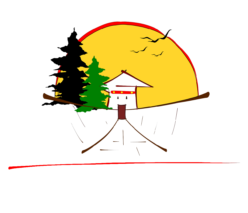Distinct old ways are vanishing with the pace of progress
Source: Kuenselonline.com
By Tashi Dema
|
|
| INDISTINGUISHABLE – Except for language, their culture and tradition have succumbed to modernisation |
26 September, 2008 – Cool clouds drift over the Wangling village in Trongsa dzongkhag bringing the inhabitants respite from the searing afternoon sun.
Lhakpa, 15, in faded jeans and black half-sleeve shirt, is on the ground near a old hut. He is in pain. While chipping at tree barks his knife fell and cut his ankle.
Lhakpa picks up a piece of cloth lying in front of the hut and wraps it over his wound. His single mother asks him to go to the basic health unit in Jangbi, located at about a two-hour walk from their village. She speaks to him in their local dialect – Monkha. But Lhakpa does not want to go anywhere. He has to attend his non-formal education class in the evening.
Lhakpa and his family are among the Monpa community, who live in the three villages of Wangling, Jangbi and Phumzur, located in the folds of undulating hills that rise to form the Black Mountain range. They are also known to be the earliest inhabitants of Bhutan. They have a unique culture and tradition of their own.
Monpas used to depend on the forest for their livelihood. They wove cane and bamboo products, wore a dress called pagay, and spoke a language – Monkha – that did not resemble any other in the country. But that was years ago.
Things have changed today.
The life led by about 261 people living in 41 households of the community reveals that, except for their language, they have lost their culture and tradition to the winds of modernisation.
Nyontemo, 75, lives in a small bamboo hut, that serves as kitchen, bedroom, work place and storeroom, with her husband and son’s family of five. Nyontemo remembers wearing pagay, the traditional dress of Monpa, which is made from nettle fibre, when she was about 10 years old, but discarded it the moment her maternal uncle bought her soft clothes made of thread. She has also never heard of her traditional song called monzhey. People rarely sang it these days preferring instead modern foreign songs.
“We discarded our traditional attire because of lack of resources and the time consumed in weaving it,” said Nyepo, 70, from Phumzur village. “Who would want to spend time weaving these rough clothes when there is so much choice in the market.”
Another tradition of the Monpa community, cane and bamboo products, like baskets and bichaps, which Monpas traded with the people of Trongsa for food and clothing, is on the verge of extinction. With agriculture and farming predominating the lives of Monpas of Jangbi and Wangling, the art of weaving bamboo products has almost become history. Only some people, living in Phumzur village, about a five-hour walk from the road head, continue the trend.
People told Kuensel they could earn more by working as daily wage workers than selling bamboo products. With the Nabji-Korphu ecotourism trail running through the heart of their village, people earn money as potters.
Extensive interviews with the Monpas revealed that they are in fact in no hurry to preserve their culture, as the term Monpas, they think, means people living under poor socio-economic conditions. This low self-esteem has resulted in people evading their tradition and culture.
Meanwhile, as the sun sets behind the Black Mountains towards dusk, Lhakpa and his other friends, who have neither seen Pagay nor heard Monzhey, have gathered in the village tshogpa’s house to select those who will perform the Monzhey, as their gewog gup has issued an order to present it in the dzongkhag for the Centennial Celebration.
But Lhakpa and his other friends are worried since they have never heard Monzhey songs. They have grown up singing rigsar songs, they say. The village is currently looking out for any elderly person who would know the old songs.

